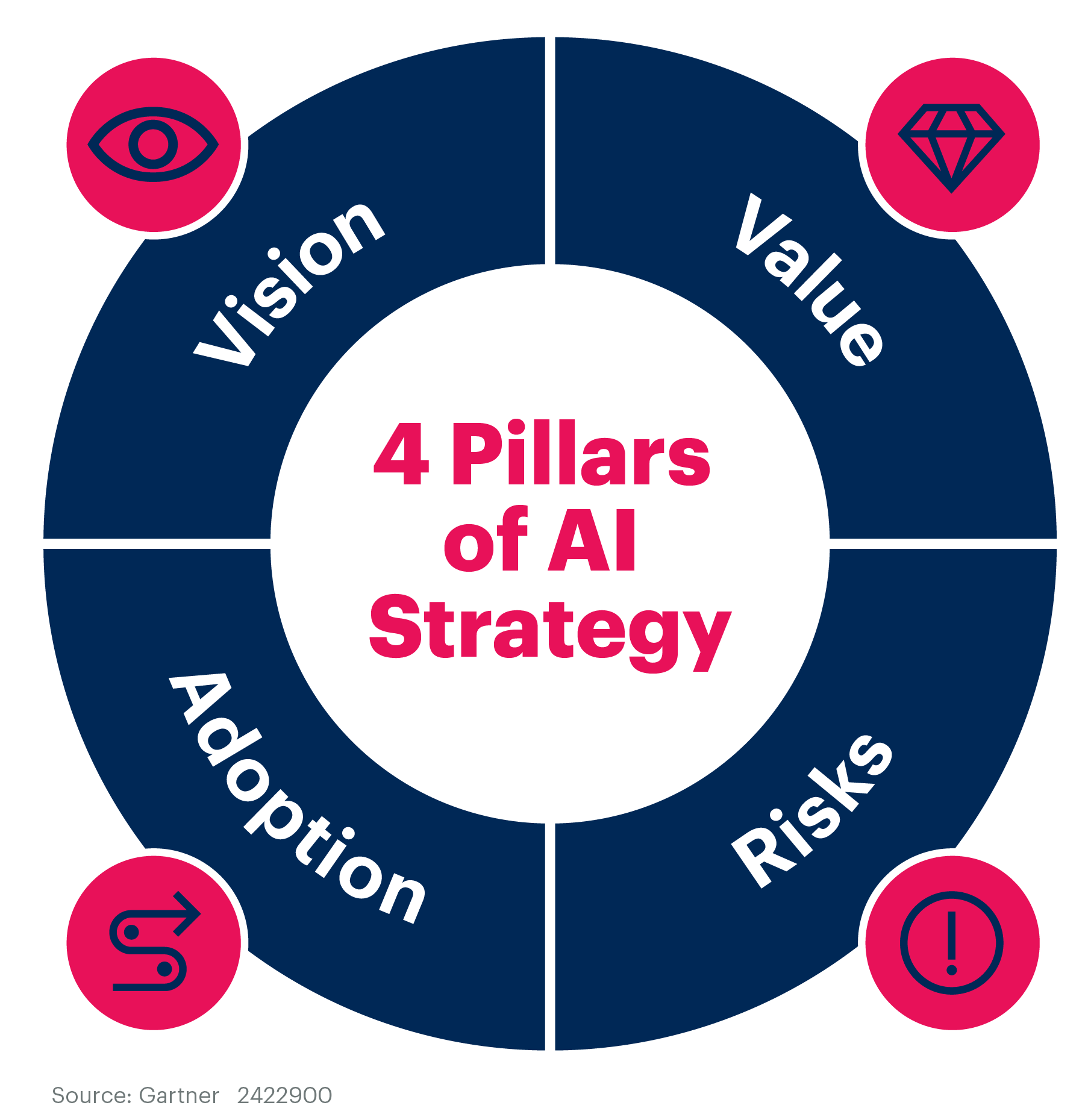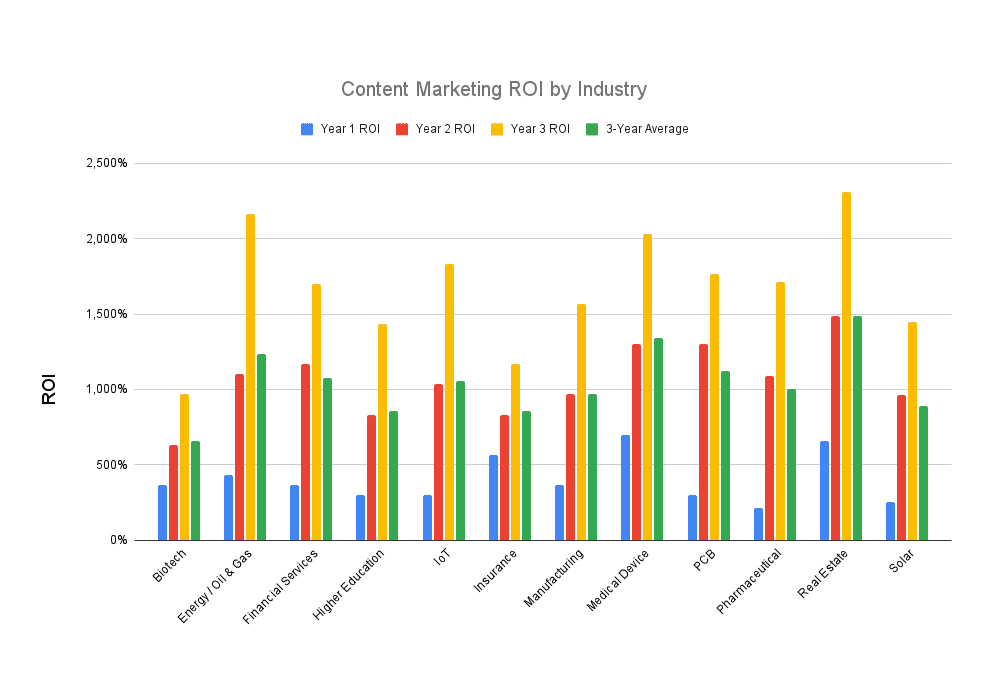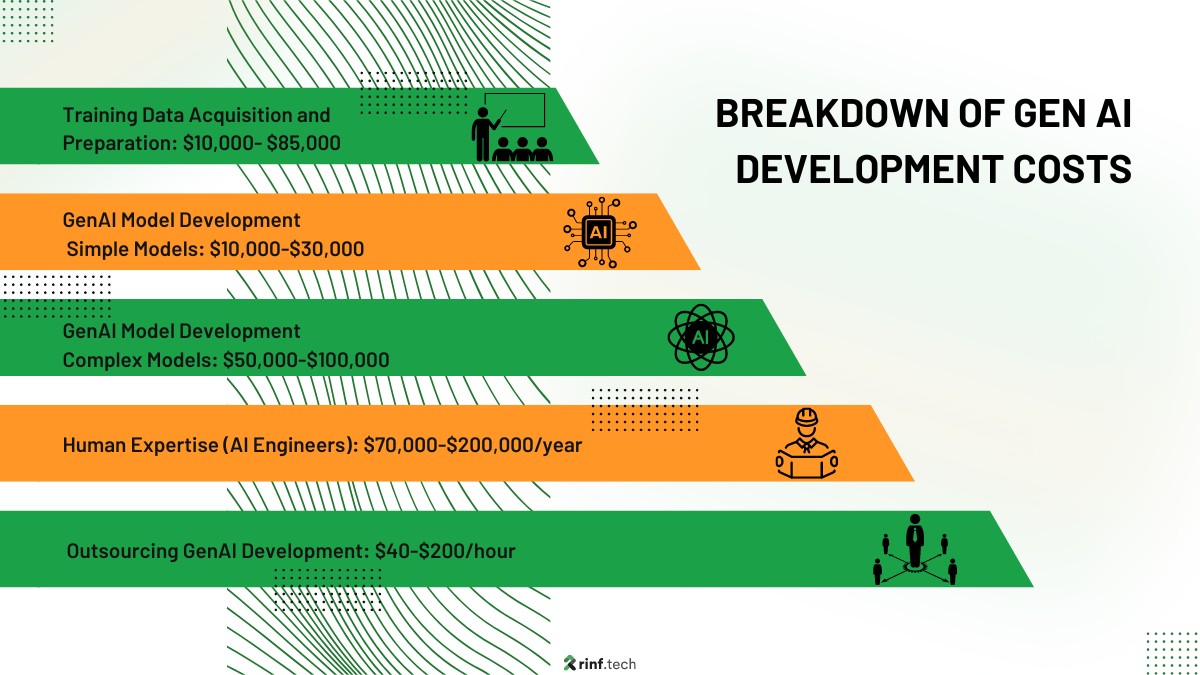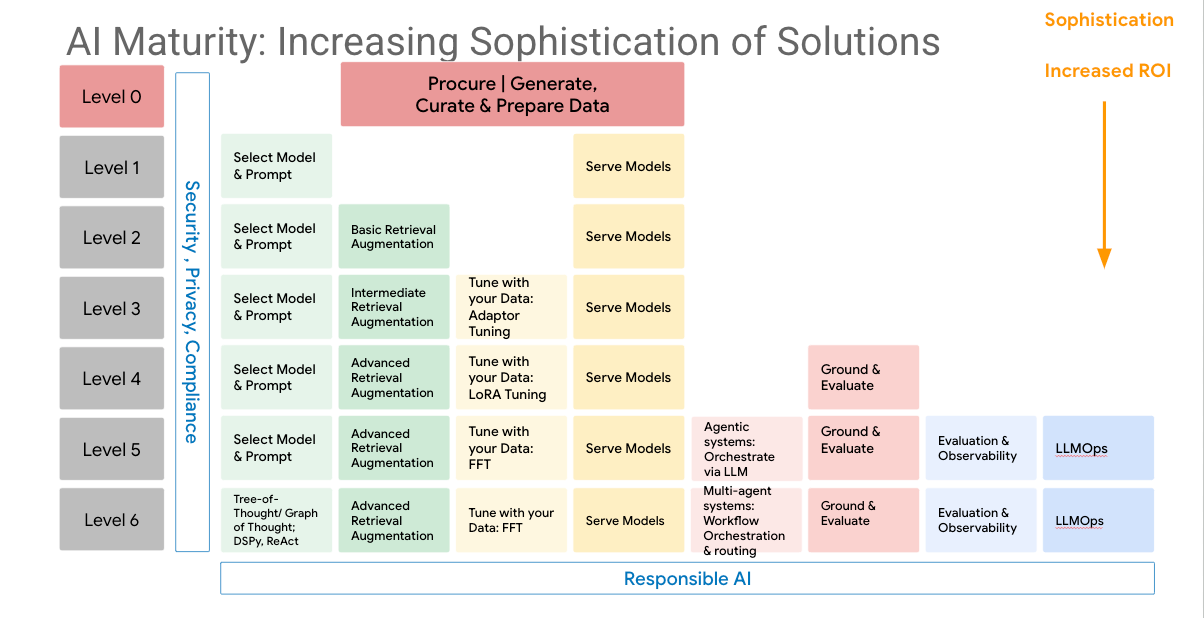The AI ROI Imperative
As AI adoption reaches critical mass across industries, business leaders are under increasing pressure to demonstrate measurable returns on their AI investments. In 2025, organizations that fail to show positive ROI from AI initiatives face 3.5x higher risk of losing competitive advantage (McKinsey, 2025). The global AI market is projected to reach $1.3 trillion by 2030, with enterprizes allocating an average of 12.5% of their IT budgets to AI and machine learning (Gartner, 2025). However, only 23% of companies report achieving significant ROI from their AI investments (BCG, 2025), highlighting the critical need for strategic planning and effective measurement frameworks. This comprehensive guide explores proven strategies for maximizing AI ROI across various business functions.
Key statistics on AI adoption and ROI across industriesSource: McKinsey: The State of AI in 2025
Global AI market to reach $1.3T by 2030 (Gartner, 2025)
Only 23% of companies achieve significant AI ROI (BCG, 2025)
AI leaders see 3.5x higher ROI than laggards (McKinsey, 2025)
Average enterprize AI budget: 12.5% of IT spend (Gartner, 2025)
Quantifying AI Business Value
Measuring AI ROI requires a comprehensive framework that captures both tangible and intangible benefits. Leading organizations use a balanced scorecard approach that evaluates financial metrics (cost savings, revenue growth), operational metrics (efficiency gains, error reduction), and strategic metrics (competitive advantage, customer satisfaction). For example, a 2025 MIT Sloan study found that companies implementing AI for customer service automation achieved an average 35% reduction in handling time and 25% improvement in customer satisfaction scores, translating to $4.7M in annual savings per 100 agents. In manufacturing, predictive maintenance powered by AI has reduced equipment downtime by 45% and maintenance costs by 30% (Deloitte, 2025). The key is to establish clear baseline metrics and continuously track progress against defined KPIs.

Comprehensive framework for measuring AI business valueSource: Gartner: AI Strategy for Business
35% reduction in customer service handling time (MIT Sloan, 2025)
45% reduction in equipment downtime with AI (Deloitte, 2025)
$4.7M annual savings per 100 agents (MIT Sloan, 2025)
30% reduction in maintenance costs (Deloitte, 2025)
Industry-Specific ROI Benchmarks
AI ROI varies significantly by industry and use case, making industry benchmarks essential for realistic expectations. In healthcare, AI-powered diagnostics have improved diagnostic accuracy by 40% while reducing costs by 30% per patient (Accenture, 2025). Financial services firms using AI for fraud detection have seen a 50% reduction in false positives and $12M in annual savings per $1B in transactions (McKinsey, 2025). Retailers implementing AI-driven demand forecasting have achieved 20% higher forecast accuracy, leading to 15% reduction in inventory costs and 10% increase in sales (BCG, 2025). These benchmarks provide valuable reference points, but organizations must consider their unique circumstances, including data maturity, technical infrastructure, and change management capabilities.

AI ROI benchmarks across different industriesSource: FirstPageSage: AI ROI Statistics by Industry
40% improvement in diagnostic accuracy (Accenture, 2025)
50% reduction in fraud false positives (McKinsey, 2025)
20% higher forecast accuracy in retail (BCG, 2025)
$12M annual savings per $1B in transactions (McKinsey, 2025)
The Hidden Costs of AI Implementation
While the benefits of AI are well-documented, many organizations underestimate the total cost of ownership. Beyond the initial technology investment, successful AI implementation requires significant spending on data infrastructure (30-40% of total cost), talent acquisition and training (25-35%), and change management (15-20%) (Gartner, 2025). Cloud AI services have reduced upfront costs, with pay-as-you-go models showing 40% lower TCO over three years compared to on-premizes solutions (IDC, 2025). However, data preparation and integration remain the most significant challenges, consuming up to 80% of AI project time and budget (Forrester, 2025). Organizations that invest in data governance and MLOps capabilities from the outset achieve 50% faster time-to-value and 30% lower total costs (McKinsey, 2025).

Breakdown of total cost of ownership for AI projectsSource: RINF: Unveiling the Costs of Generative AI Projects
80% of AI project time spent on data preparation (Forrester, 2025)
Cloud AI shows 40% lower TCO (IDC, 2025)
50% faster time-to-value with MLOps (McKinsey, 2025)
30% lower costs with proper data governance (McKinsey, 2025)
Maximizing Long-term AI ROI
Achieving sustainable ROI from AI requires moving beyond point solutions to enterprize-wide AI strategies. Companies that establish AI Centers of Excellence (CoEs) report 2.7x higher ROI than those with decentralized approaches (Deloitte, 2025). Continuous learning and model retraining are critical, with organizations that update models monthly seeing 40% better performance than those updating quarterly (MIT Sloan, 2025). The most successful enterprizes treat AI as a core business capability, with 78% of AI leaders integrating AI strategy with overall business strategy (McKinsey, 2025). As AI becomes increasingly commoditized, the greatest returns will come from proprietary data assets, domain expertize, and the ability to operationalize AI at scale across the organization.

AI maturity framework for maximizing long-term ROISource: Dr. Arsanjan: The GenAI Maturity Model
2.7x higher ROI with AI CoEs (Deloitte, 2025)
40% better performance with monthly model updates (MIT Sloan, 2025)
78% of AI leaders integrate AI with business strategy (McKinsey, 2025)
60% of AI value comes from operationalizing models (Gartner, 2025)
References
McKinsey & Company. (2025). The State of AI in 2025: ROI and Business Impact.
Gartner. (2025). AI Market Guide: Trends, Forecasts, and ROI Analysis.
Boston Consulting Group. (2025). Measuring AI ROI: A Comprehensive Framework.
MIT Sloan Management Review. (2025). AI Implementation and ROI: Best Practices.
Deloitte. (2025). The AI-Powered Enterprize: Maximizing ROI.
Accenture. (2025). AI in Healthcare: Measuring the Impact.
IDC. (2025). Cloud vs. On-Premizes AI: Total Cost of Ownership.
Forrester. (2025). The Hidden Costs of AI Implementation.
Harvard Business Review. (2025). Building an AI-First Business.
Stanford University. (2025). AI Index Report 2025.
Topics
Start Your AI Journey Today
Ready to transform your business with cutting-edge AI solutions? Contact our team of experts to discuss your project.
Schedule a Consultation